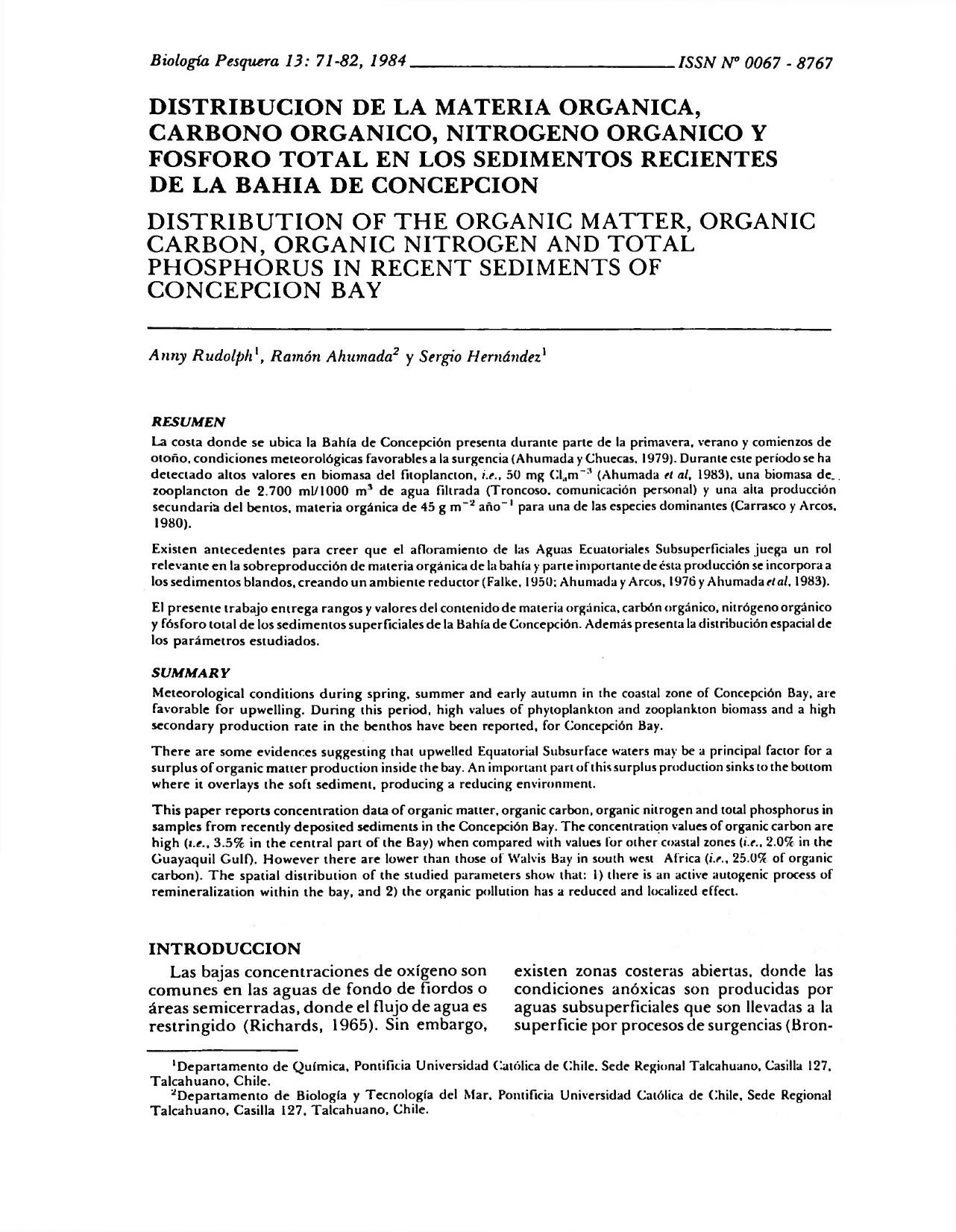Distribución de la materia orgánica, carbono orgánico, nitrógeno orgánico y fosforo total en los sedimentos recientes de la Bahía de Concepción.
DOI:
https://doi.org/10.21703/0067-8767.1984.13.2485Resumen
La costa donde se ubica la Bahía de Concepción presenta durante parte de la primavera, verano y comienzos de otoño, condiciones meteorológicas favorables a la surgencia (Ahumada y Chuecas. 1979). Durante este período se ha delectado altos valores en biomasa del fitoplancton, i.e., 50 mg CI.,m-:' (Ahumada ti al, 1983), una biomasa de zooplancton de 2.700 mi/1000 m-* de agua filtrada (Troncoso, comunicación personal) y una alta producción secundaria del bentos, materia orgánica de 45 g m-2 año-1 para una de las especies dominantes (Carrasco y Arcos, 1980). Existen antecedentes para creer que el afloramiento de las Aguas Ecuatoriales Subsuperficiales juega un rol relevante en la sobreproducción de materia orgánica de la bahía y parte importante de ésta producción se incorpora a los sedimentos blandos, creando un ambiente reductor (Falke, 1950; Ahumada y Arcos, 1976 y Ahumada etal, 1983). El presente trabajo entrega rangos y valores del contenido de materia orgánica, carbón orgánico, nitrógeno orgánico y fósforo total de los sedimentos superficiales de la Bahía de Concepción. Además presenta la distribución espacial de los parámetros estudiados.




